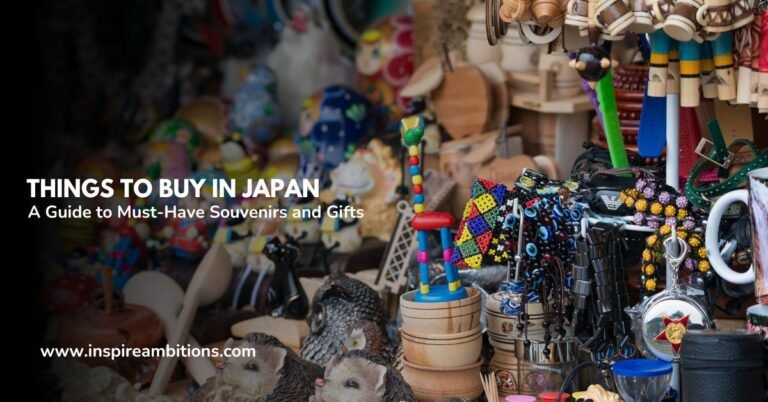Argentina Art Scene – Vibrant Traditions and Modern Trends
Argentina’s art scene is as vibrant and diverse as its culture.
From the pre-Columbian era with sites like the Cueva de las Manos, featuring ancient hand stencils, to the modern expressions of urban struggles by painters like Antonio Berni, the country’s artistic landscape tells a story of evolution and social commentary.
You’ll find that Argentine art is a unique blend of traditional techniques and contemporary issues.
Art in Argentina mirrors the country’s dynamic history, exhibiting a fusion of indigenous and European influences.
Starting with indigenous people’s rock paintings, art has evolved through the colonial period and into the present day, where artists address various subjects including, but not limited to, politics, culture, and the daily lives of Argentinians.
Not to be overlooked, Antonio Berni’s work with characters like Juanito Laguna provides insight into the social fabric of the nation, illustrating the experiences and challenges faced by the working class.
Whether you’re an art enthusiast or just curious about Argentina’s cultural treasures, exploring the wealth of creativity that has originated from this South American country is a fascinating journey. From historical works that reflect the past to contemporary pieces that comment on the current state of society, Argentine art stands as a testament to the nation’s rich heritage and enduring spirit.
Historical Development of Argentine Art
Argentine art has a vibrant history shaped by indigenous traditions and European influences, evolving through various periods from pre-Hispanic times to the modern era.
Pre-Hispanic and Colonial Art
Art in Argentina before the arrival of Europeans was richly influenced by indigenous cultures, particularly in regions like Patagonia and the Andean northeast. The Cueva de las Manos in Santa Cruz, for example, showcases pre-Hispanic artwork with handprints dating back over 9,000 years. During the colonial era, starting in 1516, European settlers introduced religious art, which blended with local traditions, creating a unique fusion that’s evident in the northwest, in places like Jujuy.
19th Century Beginnings
The 19th century marked the start of Argentina’s journey towards a national identity in art, influenced by European immigration and local culture. The Museo Nacional de Bellas Artes, established in 1896, became a pivotal institution for Argentine art. Artists like Juan Carlos Castagnino began incorporating European techniques with Argentine subjects.
20th Century Movements
In the 20th century, Argentine art witnessed significant changes, mirroring the social and political landscape of the country. European avant-garde movements influenced local artists, leading to the development of bold, innovative styles. The Buenos Aires avant-garde in the 1920s, for instance, was a period of significant creativity and experimentation.
Artistic Genres and Techniques
The vibrant landscape of Argentine art offers a feast for the eyes through various forms, including painting, sculpture, y printmaking.
Painting and Drawing
Argentine artists often express themselves through the stroke of a brush or pencil. Painting y drawing are the most accessible genres, where artists bring to life images that capture everything from the essence of daily life to more complex societal themes.
- List
- TechniWatercolourrcolor: prized for its delicate and transparent qualities.
- Acrylics: known for their versatility and fast-drying nature.
- Charcoal and Pastels: used for their rich textures and depth.
Examples include:
- Social Realism: Often telling stories of the local communities and urban challenges.
- Surreal Images: Since the 1960s, artists have mixed the familiar with the strange to create thought-provoking visuals.
Sculpture and Installation
Moving into three dimensions, esculturas y instalaciones invite you to walk around and view them from every angle for an engaging experience. Often, these artworks reflect Argentina’s cultural tales or political history, adding depth beyond their physical form.
- Materiales:
- Bronze: for traditional, enduring works.
- Mixed Media: combining various elements to tell a contemporary story.
- Installations: creating immersive environments.
Printmaking and Illustration
Printmaking y illustration hold a special place in Argentine artistic tradition with intricate details and powerful narratives. Artists utilize these forms to share their stories, mass-producing their messages to reach a wider audience.
- Styles:
- Woodcuts: carving images into wood for a striking effect.
- Etching: using acid to cut into a metal plate for fine lines.
- Screen Printing: for its ability to layer colours and images uniquely.
Each genre and technique contributes to the dynamic tapestry of Argentina’s art, which is continually evolving and inviting exploration.
Notable Figures and Works
Argentina’s art scene shines brightly due to a dynamic mix of influential figures and their groundbreaking works. Let’s spotlight a few artists and masterpieces that have left a lasting impact.
Influential Argentine Artists
Antonio Berni is notable for his works that address the life of ordinary folks, primarily through characters like Juanito Laguna. His use of “narrative painting” to explore social issues sets him apart.
Xul Solar had a versatile approach, expertly dabbling in painting and sculpting and even invented languages. His creativity knew no bounds, and his impact remained strong.
Benito Quinquela Martín is another artist recognized for his vibrant portrayal of working-class neighbourhoods; he elevated the La Boca district into iconic status with his colourful canvas.
In the realm of modern art, Luis Felipe Noé y Jorge de la Vega were part of a group of artists who explored “new painting,” reflecting social turmoil through bold and expressive styles. Their collective effort was a beacon of innovation in the Argentine art landscape.
Marta Minujín is famed for her avant-garde, pop art creations, like the interactive installation La Menesunda, which offered a unique immersive experience, pioneering a blend of art and engagement.
Remarkable Artistic Creations
La Menesunda: Created by Marta Minujín, this interactive maze was far ahead of its time. It allowed participants to explore a variety of rooms, each with a distinct sensory experience.
Juanito Laguna: A series of paintings by Antonio Berni telling the story of a young boy from the slums, a poignant reflection on inequality and resilience within Argentina’s social landscape.
Notable Artistic Periods and Styles
Argentina’s artistic evolution was significantly influenced by immigrant artists who contributed to rich cultural tapestries with varieties of European styles, infusing local narratives and landscapes.
Desde el pre-Columbian era to modernism, the evolution of Argentine art paints a historical overview of its vibrant culture. Early expressions, like those found in the Cueva de las Manos, to the innovative works by 20th-century artists, represent a wide spectrum of styles and themes.
Renowned artist Florian Paucke, a Jesuit missionary, left behind a wealth of sketches and paintings that offer insight into the indigenous people and nature during his time in the 18th century. His contributions to the early documentation of Argentina’s cultural heritage are invaluable.
The enchanting ballets painted by Raúl Soldi, whose frescoes adorn the dome of the iconic Teatro Colón, stand as a testament to his expressively poetic take on the performing arts.
In the realm of sculpture, León Ferrari is remembered for his provocative works that challenged authority and conventional thinking, making a bold statement in modern Argentine art.
Martín Malharro introduces Impressionism to Argentina with his light-filled landscapes, showcasing the natural beauty of the nation with a gentle, refreshing touch.
This peek into Argentina’s art world reveals a diverse galaxy of artists and creations. From Malharro’s serene landscapes to Minujín’s daring art happenings, these figures and works underscore a rich heritage of creativity and reflection.
Cultural Influence and Social Aspects
In Argentina, art intertwines with cultural and social facets, reflecting identity and contributing to vibrant public spaces.
Identity and Social Commentary
Art in Argentina serves as a mirror, reflecting the nation’s myriad of social and cultural elements while often providing commentary on them. Argentine artists have historically used their craft to express social and political thoughts, sometimes as a form of protest against censorship and injustice. The vibrant works of Nuevo Realismo or New Realism and Social Realism capture this essence by commenting on societal issues such as poverty and social stratification.
For instance, the portraits of the common desocupados (the unemployed) tell tales of hardship and resilience. These artworks often stir conversation and can be provocative, but they always aim to capture the human experience in its truest form.
Art in Public Spaces and Architecture
Argentina’s commitment to art extends well beyond galleries into public spaces and architecture. Stroll through neighbourhoods like La Boca, and you’ll be greeted by vivid murals that reveal stories of the community and its people. Notable areas include UNESCO World Heritage sites como Cueva de las Manos in Patagonia, featuring ancient hand paintings by indigenous peoples.
Argentine architecture also draws inspiration from European styles to create unique structures that stand as cultural landmarks. Cities like Córdoba y Tucumán showcase colonial buildings alongside modern and postmodern designs. Public art and architecture in Argentina are not just aesthetic additions; they are integral parts of the societal tapestry that speaks to the nation’s cultural heritage and diversity.






